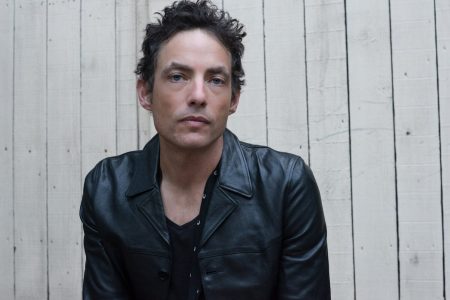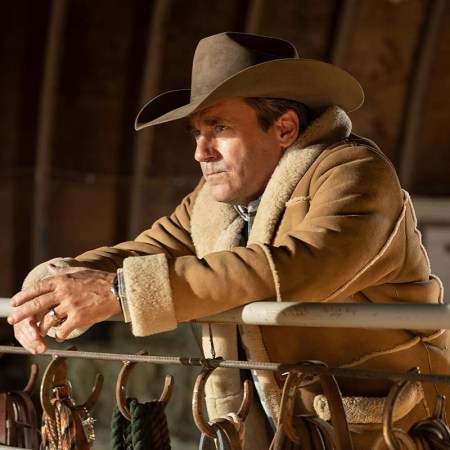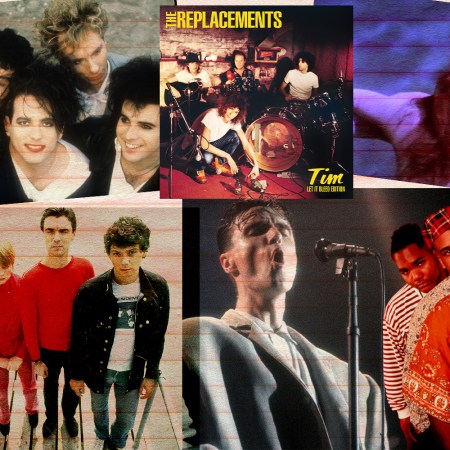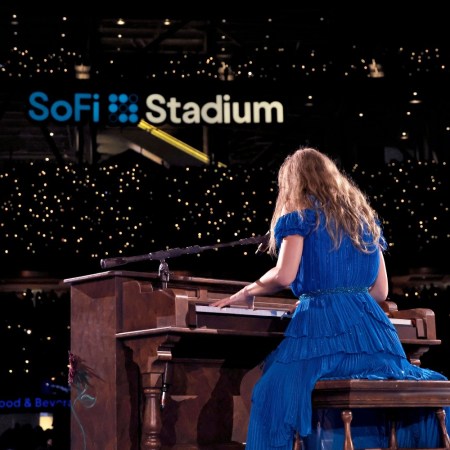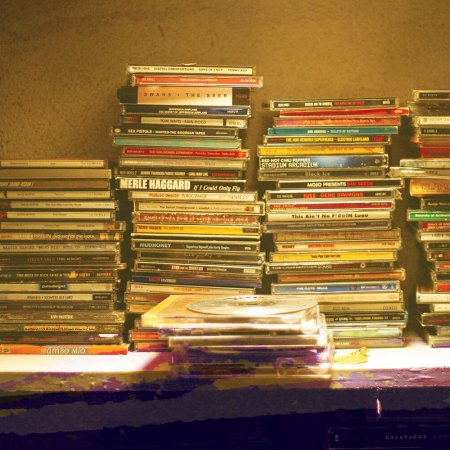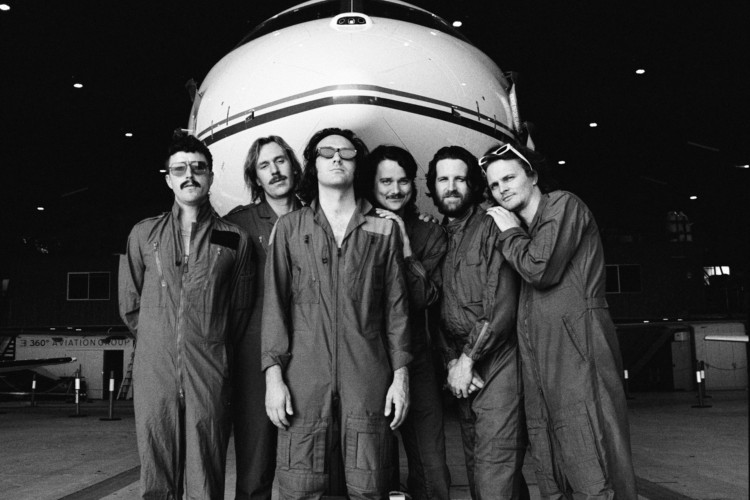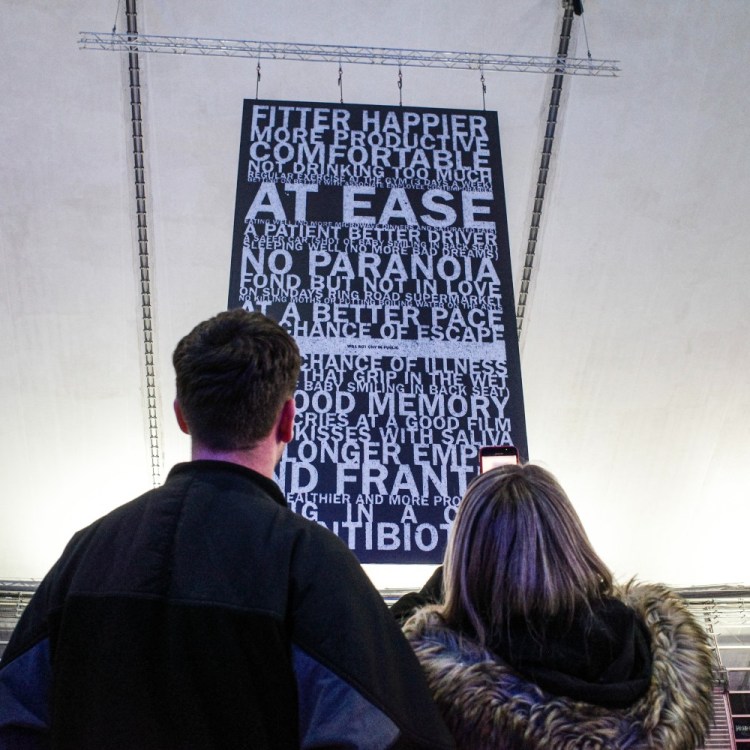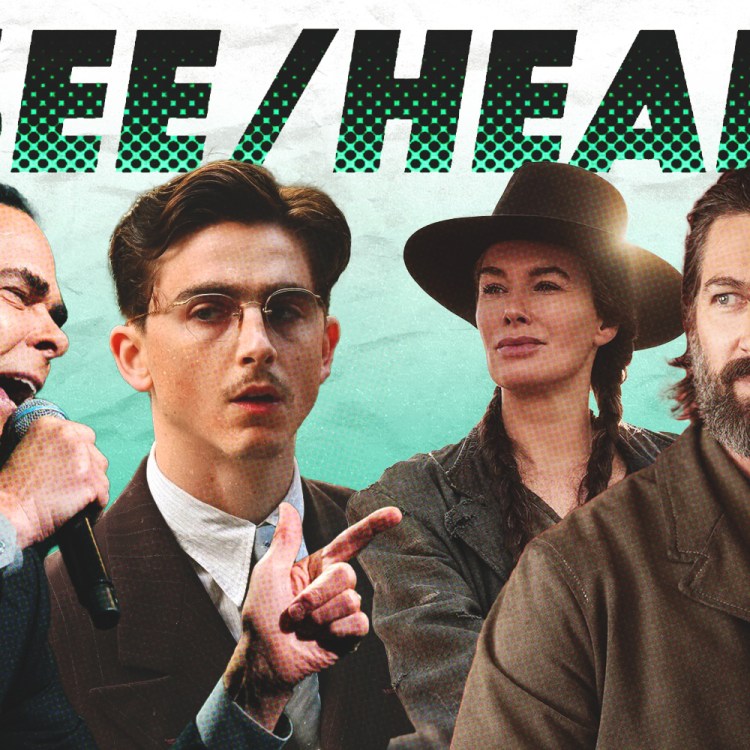When Dan Wilson began what became a long and productive career of writing and producing music, his band Semisonic hadn’t officially broken up or even called an official hiatus. Yet after the band’s tour behind their 2001 album All About Chemistry wrapped up, Wilson’s plate continued to get fuller and fuller, as he translated his skill at writing prior hit songs like “Closing Time” and “Singing In My Sleep” to an expanding and higher profile list of artists, including The Chicks, Weezer, Adele, Pink and Taylor Swift. He relocated from Minneapolis to Los Angeles, while Jacob Schlichter moved east to New York, and the prospect of writing new music kept getting pushed back further and further. But the three musicians never quite abandoned the idea, even if it remained on the backburner for nearly two decades.
“[Bassist] John Munson had kept up a very gentle barrage of ‘do you have any new songs, shall we make a new Semisonic record?’ Jokingly asking, ‘What’s the hold-up?’” Wilson says in a Zoom call from his L.A. home. “And I’d say I’m writing new songs, but none of them sound like us. He’d very gently and persistently try to get me to write songs for the band. And I’d give it a shot and it just wouldn’t sound like the band to me. Then in 2017 or ’18, I had a meeting with Liam Gallagher about writing some songs for one of his records. And that didn’t work out. But when I listened to those song ideas, I thought, ‘These sound like Semisonic.’ I got excited and I kind of wrote six or seven new songs in 2017 or 2018 and sent them to the guys and everyone was really happy with them. It felt like a door was opened.”
Little Bit of Sun, Semisonic’s first new full-length album in two decades and follow-up to 2020’s You’re Not Alone EP, is a return to the bright and magnetic power pop that defined the group’s earlier albums, such as 1996’s Great Divide and 1998’s Feeling Strangely Fine. From the upbeat strum-along of the title track, the band sounds as energized as ever, delivering a batch of songs that feel as if no time at all has passed since 2001’s All About Chemistry. Yet there’s a sense of nostalgia and wistfulness to the album, its songs as concerned with where they’ve been as where they are now.
We spoke to Wilson recently to discuss how Little Bit of Sun came together, how working with other artists has influenced his approach with his longtime band, and the legacy of their enduring hit song, “Closing Time.”
Jakob Dylan on ’90s Nostalgia and “Exit Wounds,” the First Wallflowers Album in Nearly a Decade
The follow-up to 2012’s “Glad All Over” perfectly captures our collective post-pandemic moodInsideHook: When you began work on Little Bit of Sun, was there a clear direction for the kind of record you wanted to make?
Dan Wilson: I had several ideas and I drifted away from some of them. I felt like I was in need of some musical consolation. Maybe comforted isn’t the right word, but I wanted to get into my natural sense of hopefulness, and a lot of my music has been melancholy, but there’s always this undercurrent of openness or optimism. So I was just thinking if I was to listen to a new Semisonic album, I wouldn’t want it to be dour and gloomy. But I did want it to be honest about how I feel. The second thing, I thought, was that I was going to follow in the footsteps of Full Moon Fever by Tom Petty, that up-and-down strumming on acoustic guitar and the song’s just super simple, campfire chords. I thought that and I wrote “Little Bit of Sun” with that in mind, and that arrow hit the mark. And that also has that melancholy but consoling feeling about it. And it’s Tom Petty-esque, I guess. But the more we got into the record, the more I got away from the Tom Petty thing. It would be fun someday to do a total cop of Full Moon Fever. But that’s not what happened this time. The third thing was to challenge ourselves to make the recordings be great trio performances, if we could possibly do it. Get back up to speed instrumentally to where we’re playing really well together and then cut the things live in a big room. So we went to Creation Audio in Minneapolis. I traveled east and our drummer Jacob traveled west, and John lives in Minneapolis, so we met in the middle. There were four sessions in about a week where we played. Sometimes we’d get it pretty quick and sometimes it would feel right after about three takes. But sometimes we’d have to set it aside and come back next time. So that third goal of having it be trio performances with some stuff added, I think we stuck to that pretty religiously.
“Grow Your Own” stands out to me as being something of an origin story on the album. There’s a line about “the bass player for ‘Til Tuesday,” in other words Aimee Mann, telling you she heard your band. Is this all drawn from actual things that happened to you?
Yeah, it is. I really love that song a lot, and one of the reasons is a lot of my philosophy about writing Semisonic songs is about the present moment. Maybe some of them are about memories about people, good or bad things that happened, but it’s still about a moment. I didn’t really want the songs to be about my life — John and Jake might have been OK-slash-annoyed by that if all the songs were my autobiography. But this time around, when I started writing “Grow Your Own” and I thought of that line, I realized here’s a song about that tipping point when as a young musician, and I think it’s very common, where my opinions about other people’s music became so intense that I realized I had to be a musician just to do it the way I kind of imagined it could be done. So when I was talking about being in Boston, I was laughing when I was writing those lyrics because it’s the most blatantly autobiographical thing I’ve ever done. It’s not even open-ended enough that you could imagine it being someone else. It’s me at 18, with a fake ID in Boston, going to see all the neighborhoods and bands, wanting to be part of their world. I’d go into town and my roommate and I would go into Cambridge or Boston and go into some bar with our fake IDs, which are hilarious. I still have them! When I wrote about the bass player from ‘Til Tuesday, it cracks me up because Aimee Mann is obviously so much more than the bass player from ‘Til Tuesday. It felt a little mischievous putting her into the song like that.
This year is the 25th anniversary of Feeling Strangely Fine, and its single “Closing Time” was huge. It kind of took on a life of its own — after this long, what’s your perspective on the song?
I still love that song. I wrote it in a short time — about 25 minutes. It was just that simple. So it was definitely a bolt from the blue, a song that just fell on me. And I was writing a song every day at that point. I sent it to a friend of mine who had good taste in music and said, “Whatever you’re doing in this song, do it more.” That was my first sense that the song had something to it beyond being just one of many songs. But what has happened since then is just ridiculous. I still hear it at Home Depot, even on the radio strangely. People quote it; it seems to have this weird evergreen quality that none of us could have predicted. Nick Launay the producer said, “Don’t put out ‘Closing Time’ as a single because it’s for the punters, and you’re not that band.” The average Joes, in other words. He goes, “That’s not you.” He didn’t say it was a bad song or that it wouldn’t do well; he just thought it was the wrong calling card for the band. And in a way he was right because the song was so successful, it had its own importance that eclipsed the band in a way. We had made a lot of music. John and I were in Trip Shakespeare and made four records with that band and toured in a van for eight years and then started Semisonic and were three years into that, and had done 10 years touring in vans. And after Feeling Strangely Fine, we felt like we had a song with a big, big buzz around it. It kind of felt like playing with fire to be playing a song with that much of a vibe. The fact is, we thought it was our biggest thing and the choice to put out our biggest sounding music was like, “Well, we’ve been in the van and know what it’s like to be indie and lift our amps onto the stage. We’ve been doing that for 10 years.” So if the choice is between doing the same thing for another five years or do something that could be bigger than the rest of our songs had been, we took the leap and went with “Closing Time.”
But first the label turned us down and said we didn’t have a hit and said they’d give us more money to record. And I said sure! I thought the whole endeavor was just a scam to get studio time. I was really into tricking people into paying for my band to be in the studio. I wasn’t really greedy, but I was greedy for that. But my manager pointed out that if we did that and recorded some new songs, the label wouldn’t use the existing songs we’d recorded: “Closing Time,” “Singing In My Sleep” and “Secret Smile.” And so he said, “Do you really think you’re going to beat those three songs with the next three songs you write? Because the next three songs are the ones they’re gonna use because they asked for it.” And I said, “Of course we won’t.” So he said we have to refuse this offer and say the record’s done. And thank god. They put out “Closing Time” with the feeling of, “Well, it’s your funeral.”
After having worked with so many different other artists and returning to writing with Semisonic, how has it affected how you approach music with the band?
I think I didn’t really know what I was doing, early on. When I was just kind of figuring out the basics of a song, I had good results. I was very single-minded in the way I was learning to write songs in Semisonic. I was learning to write songs I wanted to hear. I was learning to make my guitar not sound like shit. Those things were just narrow-minded kind of goals. And then when I started writing with other people, it’s not like it messed with my head, but I had to learn how to get into other people’s points of view and how the ideal musical solution for me would not be cool for that person. And then I worked with such a variety of people in so many different styles of music, which I love — I’m very lucky in that way. But it broadened my perspective in a way that it made me better at writing for other people than for Semisonic.
I think becoming such a generalist in songwriting made it hard to be the guy in Semisonic for a while. Because I didn’t really know what the mindset was I was getting into when I was writing for the band. When we were making You’re Not Alone, I had this observation where the songs that sounded the best were the ones where the voice of the band I was writing for wasn’t Adele’s voice or John Legend’s voice. I would always have my collaborator sing the voice to know if it was bad or good, but when I’m writing for Semisonic, it’s the way John and Jake play together. The way it worked with the rhythm section was the truth test. If it sounds awkward for them to play it, and they can’t figure out how to groove on it, it’s going to be bad. Once I learned too much and became good at writing for other people’s voices, I was at sea with Semisonic until I could treat John and Jake’s rhythm section sound as a voice, and then things got a lot clearer.
This article appeared in an InsideHook newsletter. Sign up for free to get more on travel, wellness, style, drinking, and culture.

